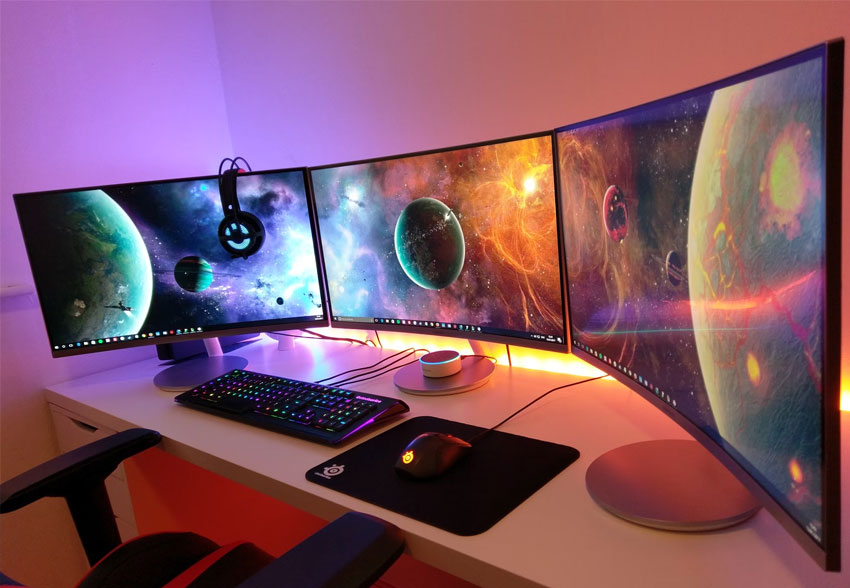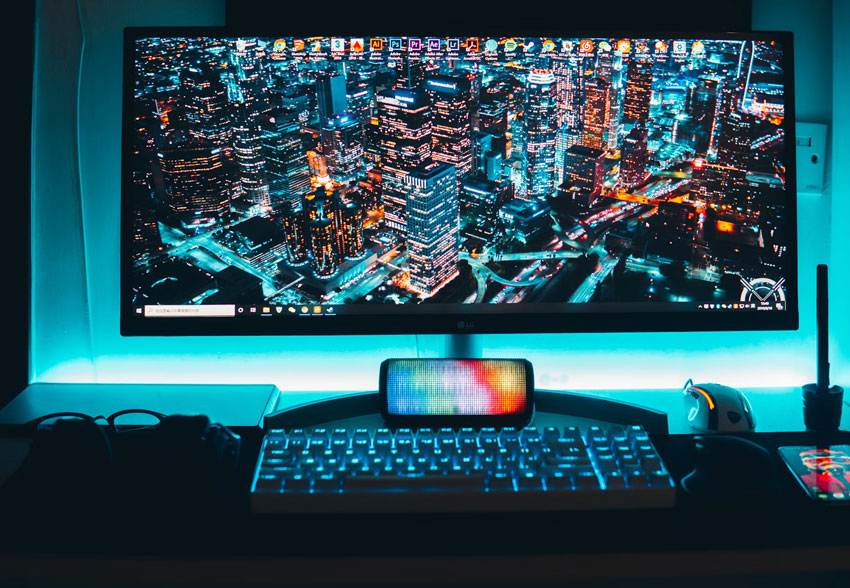This article provides an overview of the pros and cons of using a smart TV as a computer monitor, highlighting advantages such as enhanced productivity and cost-effectiveness, as well as disadvantages including lower resolution and input lag issues, and offers recommendations for optimizing the setup.

Overview of Using a Smart TV as a Computer Monitor
Employing a smart TV as a computer monitor offers users the unique advantage of merging entertainment and productivity seamlessly on a single screen. For example, individuals can enjoy streaming their favorite shows or movies on a large screen while also being able to switch to work tasks without the need for multiple devices. This dual functionality is particularly appealing in spaces where optimizing both work efficiency and leisure activities is essential, such as home offices or entertainment rooms.
As the utilization of smart TVs as computer monitors continues to gain momentum, more people are gravitating towards this setup due to its versatility and cost-effectiveness. For instance, professionals working from home can benefit from the convenience of having a large display that caters to both their work-related tasks and relaxation needs without the added expense of purchasing a separate computer monitor. By tapping into the advanced features of smart TVs that enhance visual experiences, users can create a dynamic environment where they can seamlessly transition between work and entertainment, all on a single screen.
Advantages of Using a Smart TV as a Computer Monitor
An important advantage of using a smart TV as a computer monitor is the significant boost in productivity it provides by offering a larger display size. This feature allows users to engage in multitasking seamlessly, whether it’s working on multiple projects simultaneously or having various windows open side by side for enhanced workflow efficiency. Furthermore, the cost-effectiveness of this setup cannot be overlooked, as users can save money by eliminating the need for a separate computer monitor. This financial aspect makes it an attractive option for those seeking to streamline their workspace without breaking the bank.
In addition to productivity benefits, smart TVs as computer monitors also excel in providing immersive gaming experiences. By leveraging the expansive screen real estate smart TVs offer, users can delve into gaming worlds with enhanced visuals and a more engaging gameplay experience. For instance, the larger display allows gamers to appreciate intricate details in graphics and enjoy a wider field of view, contributing to a more immersive gaming environment. This advantage becomes especially pronounced during action-packed games where every detail matters for gameplay.
Disadvantages of Using a Smart TV as a Computer Monitor
While using a smart TV as a computer monitor offers various benefits, there are some notable disadvantages to consider. One significant drawback is the lower resolution capabilities of smart TVs compared to dedicated computer monitors. For instance, a smart TV may not display images or text as crisply or clearly as a specialized monitor, affecting the overall visual quality and user experience.
Moreover, input lag can be a prevalent issue when using a smart TV as a computer monitor. This delay in response time can be particularly frustrating during fast-paced activities like gaming or even when performing everyday tasks such as typing or scrolling. The input lag on smart TVs may hinder the seamless interaction between the user and the screen, impacting productivity and enjoyment.
Furthermore, the suboptimal pixel density of smart TVs is another downside to using them as computer monitors. When viewed up close, the lower pixel density of a smart TV may result in less sharp and detailed images compared to traditional computer monitors. This lack of clarity can be noticeable, especially when working on tasks that require precision or when watching high-definition content, potentially compromising the visual experience.

Comparison with Traditional Computer Monitors
When comparing the use of smart TVs as computer monitors with traditional computer monitors, several key differences become apparent. One of the significant distinctions is the refresh rate. Smart TVs typically come with refresh rates around 60Hz, while computer monitors often offer refresh rates of 120Hz or more, which is essential for smoother visuals, especially in fast-paced activities like gaming. For example, in competitive gaming scenarios where split-second reactions are crucial, a higher refresh rate on a computer monitor can provide a competitive edge by displaying more up-to-date frames per second compared to a smart TV.
Moreover, another critical aspect to consider is the input lag. Computer monitors are specifically engineered to minimize input lag, ensuring a more responsive user experience, unlike smart TVs that may exhibit delays in registering user commands. For instance, when engaging in activities like drawing or gaming that demand precise and immediate responses, a computer monitor’s lower input lag can significantly enhance the overall user interaction and satisfaction. Additionally, the Pixel Per Inch (PPI) count on computer monitors is generally higher than that of smart TVs, leading to sharper images and text when viewed up close. This difference is particularly noticeable when working on detailed design tasks or reading small text on the screen, where the higher PPI count of a computer monitor can offer superior clarity and visual fidelity.
Tips for Optimizing a Smart TV for Use as a Computer Monitor
When optimizing a smart TV for use as a computer monitor, it’s crucial to delve into various considerations to enhance the overall user experience. For example, connectivity plays a significant role in ensuring seamless functionality. By utilizing HDMI connections, users can not only achieve better display quality but also ensure compatibility with smart TVs, allowing for a more streamlined setup. This compatibility factor is essential in maximizing the potential of the smart TV as a computer monitor, enabling users to make the most of its features without encountering connectivity issues.
Moreover, the setup process requires meticulous attention to detail. Factors such as pixel density, input lag, and response time should be carefully assessed to guarantee an optimal viewing and interaction experience. By fine-tuning these settings, users can mitigate common issues like image blurring, delayed responsiveness, or screen flickering, thus creating a more user-friendly interface. Additionally, for individuals engaging in gaming activities on their smart TV-computer monitor setup, transitioning to a dedicated computer monitor can significantly elevate the gaming experience. The higher refresh rates and reduced input lag offered by dedicated monitors can enhance gameplay fluidity, responsiveness, and overall enjoyment. Therefore, by implementing these tips and tailoring the setup to individual preferences, users can effectively optimize their smart TV for use as a computer monitor, catering to a spectrum of tasks and activities with improved efficiency and performance.

Conclusion and Recommendations
In conclusion, the decision to use a smart TV as a computer monitor involves a balancing act between the advantages and disadvantages it presents. While the larger display size can enhance productivity by facilitating multitasking and improving workflow efficiency, users need to be aware of the potential drawbacks such as lower resolution capabilities compared to dedicated monitors. For example, graphic designers or video editors who require high resolution for detailed work may find the pixel density of a smart TV inadequate for their needs, affecting image clarity and sharpness.
Moreover, when considering the choice between a smart TV and a traditional computer monitor, users should prioritize their specific requirements for gaming, work, and entertainment activities. For instance, individuals who prioritize gaming performance should opt for a dedicated computer monitor with higher refresh rates and lower input lag to ensure a smooth gaming experience. By taking into account these factors and understanding their personal preferences, users can make a well-informed decision that aligns with their usage patterns and optimizes their overall viewing and computing experience.